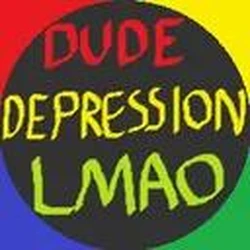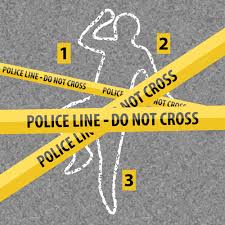Now imagine having a calculator with symbolic math support and the ability to solve derivatives and integrals with unknown variables. And I took that shit into the SAT because the TI nspire CX CAS was allowed. (Apparently that changed just this year holy moly)
- 0 Posts
- 144 Comments

 8·10 days ago
8·10 days agoSame I have a feeling that the best I’m gonna get is a VRChat avatar though 😿
 2·11 days ago
2·11 days agoTesla Robotaxi Reports 3 Crashes In Austin In July, Hides Details
By Brad Templeton, Senior Contributor.
Brad Templeton, who was early at Waymo, covers transportation’s future
Sep 18, 2025, 04:43pm EDT
Sep 22, 2025, 01:24pm EDT
(Photo alt text: Musk Self Driving Promises)
A rider boards a driverless Tesla robotaxi, a ride-booking service, Sunday, June 22, 2025, in Austin, Texas. (AP Photo/Eric Gay) Copyright 2025 The Associated Press. All rights reserved
Tesla’s crash report for self-driving vehicles to the federal government lists 3 crashes involving the Tesla robotaxi, in July, shortly after launching their pilot service in Austin, TX. Tesla redacted much of the relevant data about the crashes, claiming they reveal important proprietary information. By this date, Tesla’s approximately dozen cars had done fairly few 7,000 operational miles. Let’s unpack the details.
UPDATE: All Crashes in the government database were listed as on July 1, but it is likely this date is used for all crashes in July. An earlier version of this story presumed the listed date was the real date.
The report is current as of August first, suggesting there were no more crashes in July. It’s not clear how many miles the cars drove: During the Tesla earnings call on July 23, it was reported they had driven 7,000 miles. That might have been in the first 30 days, or it might have covered just driving in the second quarter, ie. from June 22 to June 30. Either way it’s a small amount of driving to have any crashes.
This is particularly true because these Tesla “robotaxis” aren’t actual robotaxis, they have a safety driver on board, located in the passenger seat. Tesla defies industry convention and calls the safety driver a “safety monitor” while they are in that right hand seat, but, like a driving school instructor they have an emergency stop button they keep their finger on, and can access the wheel, they are the responsible driver for legal reasons. (This is what a safety driver means, they are not expected to actually drive the car, they are the legal, licensed driver who can intervene if the car makes a mistake.) The crash rate with a safety driver should be very low. Tesla claims its Autopilot (mainly freeways) system with a human monitoring it has an airbag deployment every 5 million miles, for example, a rate probably modestly better than the drivers would have alone. (Tesla claims 10x better but this is highly inaccurate–people in the same demographic have airbag deployments on freeways probably every 3-4 million miles, though this number is not easy to determine.)
With the crash description and other important details like location redacted, it is hard to really determine what happened.
- 3:45am The Tesla was stopped (while going straight) and damaged on the rear-right by an SUV front right. Police were called.
- 12:20pm: Tesla hit a stationary object with front-right at 8mph. Minor injuries, no hospital. Police called. Tesla was towed away
- 3:15pm: Tesla rear-right contacted front-right of an SUV while Tesla was making right turn, going 2mph. No police. (Report appears twice due to update.)
Crash #1 looks like the Tesla was rear ended while stopped which would be no fault of the vehicle or safety driver. Crash #3 is harder to tell–without the details, it could be the Tesla backing up, or it could be a rear-ending. Crash #2 is the most serious. Even one crash of this nature in the first 7,000-25,000 miles is cause for significant concern, especially with a safety driver on board.
During this period, Waymo had many crash reports, Zoox had 7 and May had 2, others had 1. The other companies do not redact the details as Tesla did. Waymo had a famous crash into a lighting pole that might be similar to crash #2 above, but this took place in a vehicle that’s giving 250,000 rides/week and just reported 96 million miles–their crash rate is actually better than expected. Analysis of the reports for Waymo suggest they are not at fault for the vast majority of their reported crashes. Even one at fault crash, especially an injury crash, in under 25,000 miles is an extremely poor rate. You can’t extrapolate well from a single data point, the strong implication is that Tesla has to get much better – perhaps 300x better, to match Waymo. The presence of the safety driver implies the improvement goal might be much greater than 100x.
It is unclear why Tesla redacted most of the important details, or what value there is in hiding data which might paint them in a better light (for example, confirming they were rear-ended.) The reports claim there was no safety driver in all 3 crashes, but that’s very unlikely, it’s more likely Tesla just trying to pretend their right side safety driver is not a safety driver.
Not listed is an event that was shown on video where the Tesla’s tire hit the front side of a parked passenger car in a parking lot on day #1. It is possible it did not need to be listed because damage was limited to tire marks, or because it was on private property. Either way, it’s at least two at-fault crashes for the Teslas, possibly three.
Let’s hope that when August reports come out, we’ll not see any from Tesla, unless they are doing a lot more miles. In California they keep the safety driver in the left seat, and they have started doing that in Texas for at least some rides, due to new regulations. Crashes with safety drivers should be ridiculously rare in a mature product–they require the system to make a major mistake, and for the human to also not handle it at the same time. When Tesla Autopilot and FSD were less mature, they made mistakes very frequently, every few miles, but even with amateur safety drivers, the resulting crash rate was low. Professional safety drivers do even better.
It’s odd that these crashes didn’t end up online. Back in July, only invited influencers were able to ride in Tesla robotaxis, and many of the rides were recorded on video. Perhaps these crashes took place during empty vehicle moves. They just say that “all passengers were belted” but that would include the safety driver. For other vehicles, there are no passengers when the vehicle is moving between rides. It’s also surprising that a crash at noon which involved the Tesla being towed away didn’t get widely reported, even in social media, considering the scrutiny and public interest in the project. It’s unclear what else we are missing.

 2·11 days ago
2·11 days agoIs external libraries maybe what you’re looking for?

 3·15 days ago
3·15 days agoWhen it takes a while for the do not unplug, it’s usually because it’s just still writing data. The loading bar you see is actually writing to a cache. If you run sync after copying the data, you’ll probably find that it finishes at the same time that it says it’s safe to unplug. The easy solution is to just get faster / nicer USB drives - check reviews for benchmarks if you can find them.
I do a 6 drive synology btrfs with double redundancy with WD ultrastar 14TB for about 50TB storage after accounting for all overhead.

 5·30 days ago
5·30 days agoI’m also curious about people’s experiences when it works - I already had 1 treatment on my underarms and it thinned it out a lot. My sister had 5 or 6 sessions for her underarms and it’s been all gone for years. Considering my decently light olive complexion and dark hair seems to be a good candidate, I’m wondering if I should do other areas but I still fear getting it done on my face and being stuck with a patchy mess if I stop being able to afford it. I rely on looking half decent unshaven to be able to not shave for a week every week and not care so if I had to start shaving every couple days that would suck.

 14·1 month ago
14·1 month agoConfirmed on truth social by Trump 2 minutes ago

 19·1 month ago
19·1 month agoFor anyone wondering, this is the close-up. Lots of blood, not something I’m gonna intentionally watch more than once.
 8·1 month ago
8·1 month agoI’ve never seen the original, do you have a link? My search isn’t returning anything relevant

 3·2 months ago
3·2 months agoMaybe lol.

 1·2 months ago
1·2 months agoWhat if that was me but I was still a boy 🤔
If I’m trans I’m not transfem im trans-whateverthisis
Thanks for the tip! Our vet actually recommended grain inclusive food I think related to her kidneys and urine results, but she had acne since before that - plus it’s mostly gone ever since we switched to a set of metal bowls that we wash after 1 use, and a brief period of regular cleaning with chlorhexidine wipes. These days I mostly just check on it once a month and periodically brush her chin to get rid of any loose blackheads since the large embedded ones are long gone.
This is so real. My cat needs someone to clean her chin acne and remember to give her anti hairball paste, and to trim her nails. A bunch of friends of friends on my Plex server need me to keep it working so they can watch all the latest movies.

 2·2 months ago
2·2 months agoThe shitman sampler or something
The matchmaking queues take forever though 😮💨
Assuming everyone enjoying Newsom and Trump fighting must support Newsom
Assuming every ml user must be a ML and therefore must unconditionally support Lenin
I’m sensing a pattern.
If you’re gonna unconditionally assume every ML user is some kind of Marxist without even asking instead of, ya know, just wanting to be on the main and one of the largest instances, then it sounds like you’re better off just blocking all of ml. It’d be better for your mental health.
I’d assume the Maxists-Leninists did
Well good for them then? Idk how that’s relevant at all like wtf are you going on about.





Luckily they are on 2.0.1 now so there has been 2 stable version by now